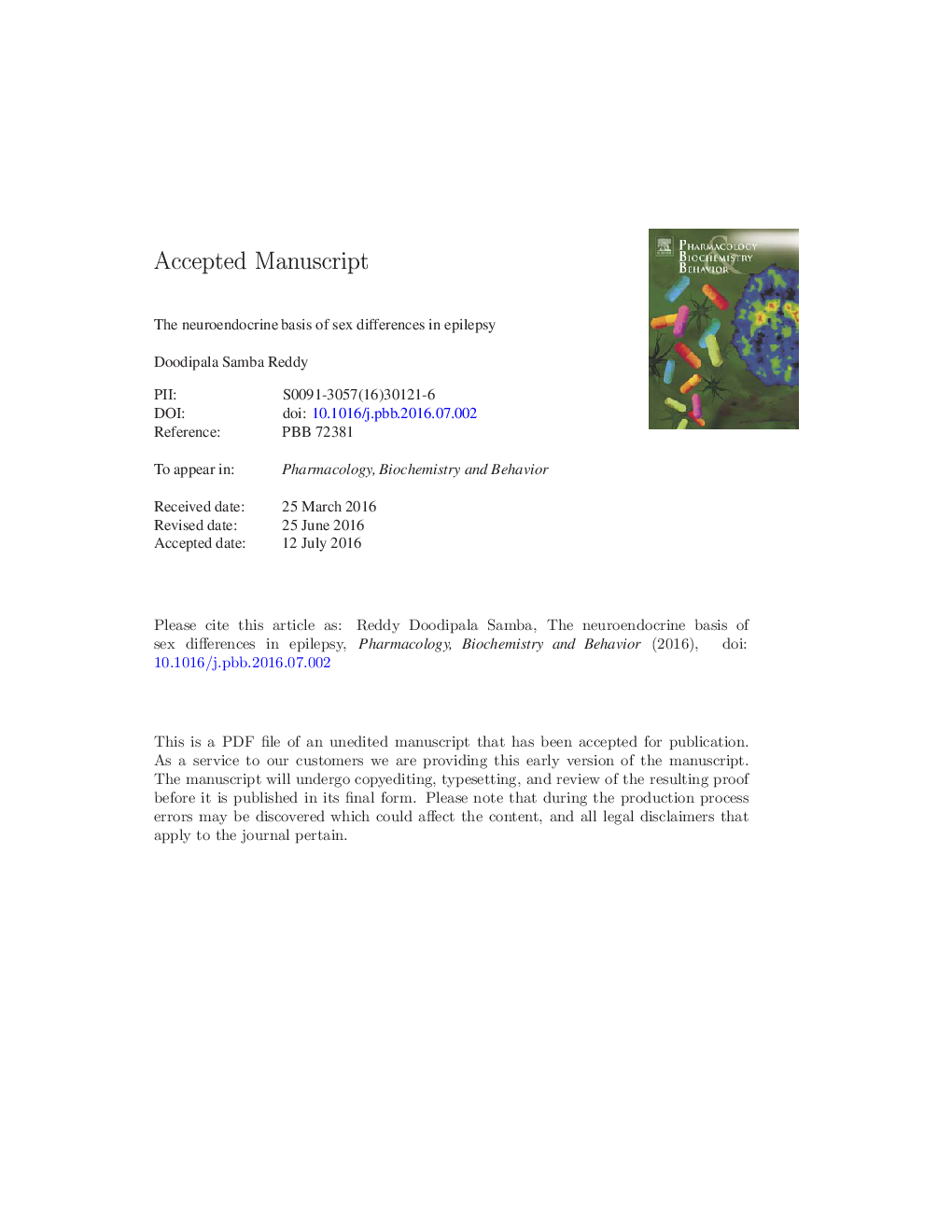ترجمه فارسی عنوان مقاله
مبنای عصبی عضلانی از اختلالات جنسی در صرع
عنوان انگلیسی
The neuroendocrine basis of sex differences in epilepsy
| کد مقاله | سال انتشار | تعداد صفحات مقاله انگلیسی |
|---|---|---|
| 125905 | 2017 | 21 صفحه PDF |
منبع

Publisher : Elsevier - Science Direct (الزویر - ساینس دایرکت)
Journal : Pharmacology Biochemistry and Behavior, Volume 152, January 2017, Pages 97-104
ترجمه چکیده
صرع بر افراد سالم و هر دو جنس تاثیر می گذارد. تفاوت های جنسی در صرع شناخته شده است. حساسیت تشنج و بروز صرع در مردان معمولا بیشتر از زنان است. علاوه بر این، صرع خاص جنسیتی نیز وجود دارد مانند صرع کاتامنیال، وضعیت عصبی عضلانی، که در آن اغلب تشنج اغلب در اطراف دوره پریوئنستروال یا دوره پریووالوتوری در زنان بالغ مبتلا به صرع پرورش می یابند. تغییرات در حساسیت تشنج نیز در بلوغ، بارداری و یائسگی دیده می شود. تفاوت های جنسی در حساسیت تشنج و مقاومت به داروهای ضد انعقاد در مدل های آزمایشی می تواند مورد بررسی قرار گیرد. درک روش شناختی مبتنی بر عصب و عضلانی از تفاوت های جنسیتی یا مقاومت در برابر داروهای محافظ ضروری است تا درمان های هدفمند برای تشنج های خاص جنسی انجام شود. این مقاله خلاصه ای از وضعیت فعلی اختلالات جنسی در حساسیت تشنج و مکانیزم های بالقوه ای که اختلالات جنسیتی را در حساسیت تشنج دریافت می کند، فراهم می کند.

